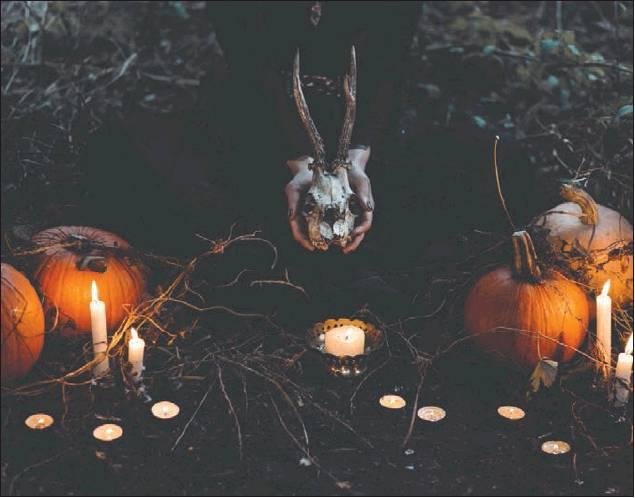Ancient Halloween’s not so good ol’ days
We are projected to spend up to $9 billion on candy and costumes this year.
My question is, do you know the real history behind this holiday?
The ancient roots of present-day Halloween are …
This item is available in full to subscribers.
Subscribe to continue reading. Already a subscriber? Sign in
Get 50% of all subscriptions for a limited time. Subscribe today.
Please log in to continueNeed an account?
|
Ancient Halloween’s not so good ol’ days
We are projected to spend up to $9 billion on candy and costumes this year.
My question is, do you know the real history behind this holiday?
The ancient roots of present-day Halloween are attached to the pagan Celtic festival of Samhain.
The website goodfight.org states the Celts celebrated the day of death in anticipation of the cold, dark winter months.
Samhain marked the time of the year when the Druids taught that demons were unleashed on the world to bring blessings or wreak havoc and destruction on unsuspecting souls.
It was believed that the boundary between the spirit world was thin and demons and the ghosts of the dead would come back.
Families even saved seats at dinners for the deceased to join them. According to the Smithsonian Magazine, the ancient Celts dressed up as evil spirits to confuse demons they believed were around that night.
According to old documents, Samhain featured sacrifices to the Celtic gods of death, with both animals and humans thrown into huge firepits as offerings.
The ancient Celts believed that carved faces on turnips and parsnips would scare away any demonic spirits roaming the earth on that night.
This festival is the origin of our present-day Halloween celebrations.
Tricks & treats
The Roman Empire integrated Samhain with the Roman festival of the dead and the celebration of Pomona. Bobbing for apples was part of that tradition.
In the 9th Century, the Roman Catholic Church spread into the Celtic lands. Many Catholic traditions merged with older Celtic festivals.
Historians believe the Church was trying to replace the Celtic festival of the dead with a church-sanctioned holiday. All Soul’s day, or All Hallows Eve, was celebrated by dressing up as saints, angels or demons and lighting bonfires.
Other medieval European traditions included “Mum-mering,” where one dressed up in disguises and visited neighborhoods while dancing, playing music and doing tricks. Smithsonianmag.com said medieval England “soulers” would go around begging rich folk for “soul cakes.”
Halloween’s meaning
The word means “hallowed evening” and was known as All Hallows Eve and, eventually, Halloween.
In the Catholic Church calendar, All Hallows Eve and All Saints Day both honored the saints. Up to the 7th Century, All Hallows Eve was on May 13, but was later moved to Nov. 1.
New England puritans frowned on any festival related to pagan religions. Later on, colonial festivities included telling ghost stories, mischief and pranks.
In the 19th Century, autumn festivals became common, but Halloween was still not celebrated. When Irish immigrants fled to America, they helped popularize this holiday.
The cultural acceptance of the American culture has removed the religious undertones of this holiday. However, some Christians refuse to celebrate Halloween because of its pagan roots and dark history.
Seeing the macabre decorations, you can now say that you know about the “not so good ole days” of Halloween history.
Other items that may interest you







Comments
No comments on this item Please log in to comment by clicking here